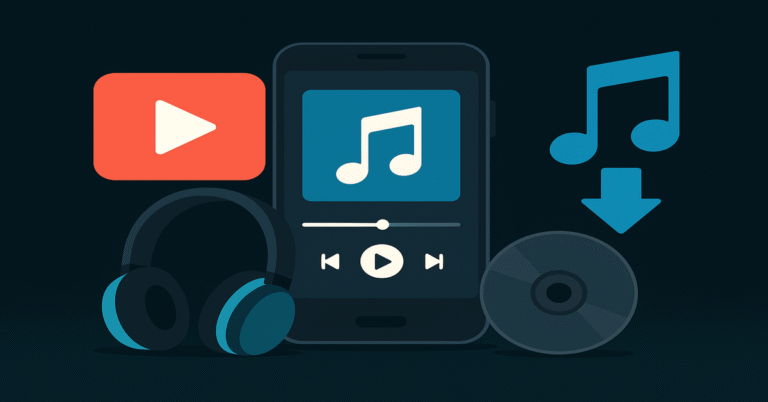
In today’s digital age, video content has become one of the most powerful forms of communication and entertainment. Among all video platforms, YouTube stands at the very top, boasting billions of videos covering everything from tutorials and music to documentaries, lectures, and personal vlogs. However, despite its vast reach and accessibility, YouTube has limitations: users cannot always download videos directly to their devices in a universally compatible format. This is where the concept of “YouTube to MP4” becomes essential.
Converting YouTube videos to the MP4 format has grown into one of the most common practices for students, professionals, educators, and casual users alike. It allows individuals to save videos for offline use, integrate them into presentations, study from them without internet access, or simply watch content on the go. Understanding YouTube to MP4 conversion involves not only learning about the technical aspects but also recognizing the implications, benefits, risks, and best practices associated with it.
This in-depth article explores everything you need to know about YouTube to MP4 conversion. We will dive into the MP4 format itself, the reasons for conversion, technical details, methods of conversion, device compatibility, advantages, challenges, and safe practices.
What Is MP4?
To fully understand “YouTube to MP4,” it’s important to know what MP4 actually is.
MP4, also known as MPEG-4 Part 14, is a digital multimedia container format used to store video, audio, images, and subtitles. It is one of the most widely adopted video formats in the world because of its ability to compress data while maintaining high quality. The versatility of MP4 makes it compatible with almost all devices, including smartphones, laptops, tablets, smart TVs, and gaming consoles.
MP4 can carry multiple streams of audio, video, and metadata, meaning a single file can contain high-resolution video, crisp audio, and even subtitles. Its compact size combined with quality preservation explains why it has become the preferred format for online streaming, video editing, and offline storage.
Why Convert YouTube Videos to MP4?
YouTube itself allows videos to be streamed but restricts direct downloading in most cases. Users often find the need to convert YouTube videos into MP4 files for reasons such as:
- Offline Access:
When internet connectivity is limited or unavailable, having MP4 copies ensures uninterrupted access to content. Students in rural areas or travelers often rely on downloaded videos for study or entertainment. - Universal Compatibility:
Since MP4 is playable on almost any device, converting YouTube videos to this format ensures that the file can be easily opened without special software. - Portability:
MP4 files can be transferred across devices via USB, cloud storage, or Bluetooth, making sharing easier. - Education and Training:
Teachers and trainers often download YouTube videos in MP4 format to integrate into lectures, workshops, and presentations. - Content Preservation:
If a video is removed or made private on YouTube, having an MP4 copy preserves access for future reference. - Editing and Custom Use:
Converting videos into MP4 allows editors to trim, crop, or remix content for projects, tutorials, or creative works.
Technical Aspects of MP4 Conversion
When you convert a YouTube video into MP4, several technical processes occur:
- Video Extraction: The software identifies the video’s original source file on YouTube’s servers.
- Transcoding (if needed): If the original file is in a different format, it is transcoded into MP4.
- Compression: The video is compressed to balance quality and file size.
- Metadata Embedding: Information such as title, artist, or subtitles can be stored within the MP4 file.
The result is a standalone file that can be easily managed and stored offline.
Common Methods of YouTube to MP4 Conversion
There are multiple methods by which users convert YouTube videos into MP4 files. Each has its pros and cons:
| Method | Description | Pros | Cons |
|---|---|---|---|
| Online Converters | Websites that allow URL input and direct MP4 download. | Quick, no installation needed. | May show ads, slower speeds, potential security risks. |
| Desktop Software | Programs installed on PCs for bulk or advanced conversion. | Higher stability, batch downloads, quality control. | Requires installation, may take more space. |
| Browser Extensions | Add-ons that integrate into browsers for one-click downloads. | Convenient, integrates directly with YouTube. | Not always supported, may break with browser updates. |
| Mobile Apps | Applications designed for Android/iOS to download and convert YouTube videos. | Portable, fast, user-friendly. | App store restrictions, varying quality. |
| Command-Line Tools | Advanced tools like youtube-dl for tech-savvy users. | Powerful, customizable, open-source. | Steep learning curve, less user-friendly for beginners. |
Advantages of YouTube to MP4 Conversion
The practice of converting YouTube videos into MP4 offers many advantages:
- Accessibility Across Devices: One file format for phones, PCs, and televisions.
- Space Efficiency: Compression helps save storage without losing significant quality.
- Offline Security: Files can be kept without worrying about deletions or internet issues.
- Flexibility in Use: Ability to add files into video editors or presentations.
- Sharing Ease: MP4s are smaller and can be easily shared via email or social media.
Challenges and Risks
While convenient, converting YouTube videos to MP4 is not without challenges:
- Legal Considerations: Downloading copyrighted content without permission may violate laws or YouTube’s terms of service.
- Security Threats: Free online converters sometimes host malware, intrusive ads, or phishing links.
- Quality Loss: Some conversions reduce video quality due to poor compression algorithms.
- Ethical Concerns: Creators depend on YouTube ad revenue; mass downloading undermines their earnings.
For these reasons, it is crucial to use safe, ethical, and legal methods of conversion.
Best Practices for Safe Conversion
To ensure healthy and responsible usage of YouTube to MP4 conversion:
- Prioritize Educational or Personal Use: Use conversions for studying, teaching, or offline personal enjoyment rather than unauthorized distribution.
- Choose Trusted Tools: Use well-known converters or open-source software with community trust.
- Check File Quality: Adjust resolution settings before downloading to maintain balance between file size and clarity.
- Secure Devices: Install antivirus software to prevent malware infections from shady websites.
- Respect Copyright: Support creators by subscribing, donating, or purchasing licensed versions when available.
Table: Resolution Options in YouTube to MP4 Conversion
| Resolution | Pixel Dimensions | Typical File Size (per 10 min video) | Use Case |
|---|---|---|---|
| 144p | 256×144 | 5–10 MB | Minimal data usage, very small screens. |
| 360p | 480×360 | 20–40 MB | Basic mobile playback. |
| 720p (HD) | 1280×720 | 80–150 MB | Standard quality for most users. |
| 1080p (Full HD) | 1920×1080 | 200–400 MB | High quality, suitable for presentations. |
| 4K (Ultra HD) | 3840×2160 | 1–2 GB | Large screens, professional editing. |
Device Compatibility of MP4 Files
One of the main reasons for choosing MP4 as the conversion format is compatibility. MP4 works with:
- Windows and Mac computers via built-in players.
- Smartphones and tablets across iOS and Android.
- Smart TVs and streaming devices.
- Gaming consoles such as PlayStation and Xbox.
- Video editing software like Adobe Premiere or Final Cut Pro.
This universal compatibility cements MP4’s dominance as the format of choice.
Future of YouTube to MP4
With advances in streaming technology, the demand for downloading content remains strong. Offline use will always have value, particularly in regions with limited internet infrastructure. As compression algorithms improve, MP4 will continue to evolve, possibly sharing dominance with newer formats like WebM or HEVC (H.265).
At the same time, YouTube itself is likely to expand official offline features to meet user demand while protecting content creators. The balance between accessibility and copyright protection will shape the future of YouTube to MP4 conversion.
Conclusion
“YouTube to MP4” is more than a simple phrase — it reflects the modern desire for freedom, accessibility, and control over media consumption. By converting online videos into a universal, portable format, users gain flexibility to study, share, or enjoy content offline. However, with this convenience comes responsibility: respecting copyright, using safe tools, and prioritizing ethical usage.
Understanding the technical, cultural, and practical aspects of YouTube to MP4 allows us to appreciate how this practice has become so widespread and why it will remain relevant in years to come.
FAQs
1. What does YouTube to MP4 mean?
It refers to converting YouTube videos into the MP4 format so they can be saved offline and played on any device.
2. Is converting YouTube videos to MP4 legal?
It depends. Downloading copyrighted content without permission may violate laws. Converting for personal or educational use is generally safer.
3. What is the advantage of MP4 format?
MP4 offers universal compatibility, small file size, and high quality, making it ideal for offline playback and sharing.
4. Can YouTube to MP4 reduce video quality?
Yes. Some converters compress files too much, leading to reduced sharpness. Choosing the right resolution helps preserve quality.
5. Which devices support MP4 files?
Virtually all modern devices—smartphones, laptops, smart TVs, and gaming consoles—support MP4 playback natively.






